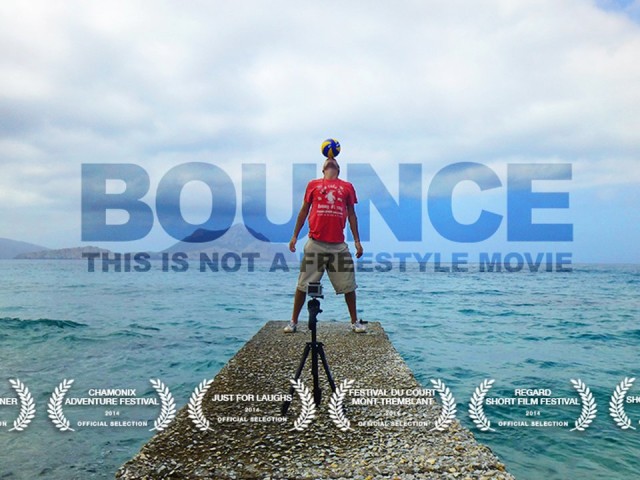Canadian John Celona has won prizes for both his screenwriting and his movie productions. He’s been making movies for 15 years. The trailer shown here is for a 9-episode web series set to premier January 2015. The logline: An entity arrives from a distant galaxy and is hungry, very hungry.
MMM: How did you get into the business?
Celona: My writing grew from beat poetry that I developed into short scripts and eventually feature-length prize-winning screenplays. My first video work was producing videoconferencing tools for distance performances. That gave me ideas about constructing narratives over time and space.
MMM: Could you give an example?
Celona: Sure. In 2000, I made an experimental short (‘Reaching for Paradise’) and used a multiscreen approach as I explored concepts of simultaneity in information and perception. This notion of simultaneity peaked in the 2009 30-minute film ‘The Strange Case of DJ Cosmic’ (available on Vimeo and IMDb). Multiscreen layouts and five languages were employed: English, French, Italian, Portuguese and Spanish. Each language featured paraphrasing dialog from the screenplay. The effect was one of subliminal consciousness running throughout and under the film.
MMM: Where did such a complex idea come from?
Celona: My inspiration for DJ Cosmic came from two sources: Carolyn Cassady’s Off the Road: My Life with Kerouac, Cassady and Ginsberg; and Alain Resnais’ 1961 new wave film classic ‘Last Year at Marienbad’. The concept of simultaneity evolved from my background as an avant-garde composer. I transferred the concept of polyphony (i.e. the interdependence and independence of many melodic threads) into simultaneous streams of narratives and meaning. I like the term parametric transference coined by composer James Tenney, a term he used to describe the density and texture in the music of Edgar Varese.
MMM: Have those early ideas carried over into “Come Sweet Earth”?
Celona: Absolutely. The big difference is length. This web series is micro-durational where each episode is only a minute or so. One thought, one action and a singular meaning conveyed through voiceovers as the spaceman’s POV. The narrative builds from episode to episode. The ending is a surprise.
MMM: What camera did you use to shoot the trailer?
Celona: Actually, I used three cameras: an iPhone 5s, a Canon Powershot A480, and a Sony XDCAM EX-1.
MMM: Was there a challenge in combining mobile footage with footage shot using traditional cameras?
Celona: All footage and audio was input into Adobe Premiere for editing and effects processing. The software expertly handled the different media formats.
MMM: How did you achieve those dazzling effects?
Celona: Video transitions and effects were rendered using Premiere’s plug-ins.
MMM: And the music?
Celona: It’s played by my electronica trio “The Krells.”
MMM: Why did you use the mobile in your shooting?
Celona: The idea of making a web series for the cameraphone evolved upon considering David Lynch’s explosive tirade about films viewed on a phone. I decided to have a go. For an indie filmmaker, delivery and viewership is critical, hence the attraction to a smaller and accessible media scale. Incidentally, Mr Lynch is one of my all-time favorite filmmakers.
MMM: Here’s a link for those who want to witness Mr. Lynch’s 30-second “discussion” about movies viewed on the small screen: http://youtu.be/wKiIroiCvZ0
Celona: Digital Spy also wrote a short piece on the same subject.
# # #
If you’d like to see more of John’s work, visit https://vimeo.com/search?q=John+Celona



 Previous post
Previous post
 Next post
Next post





